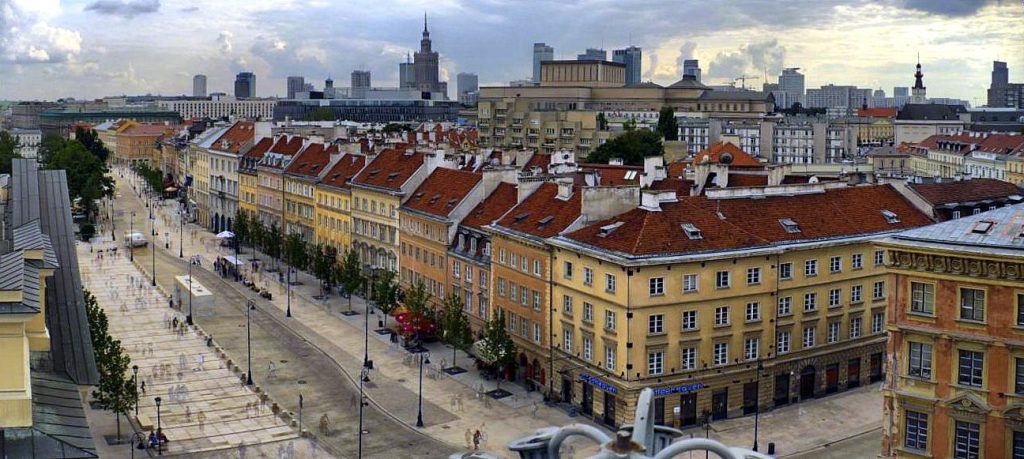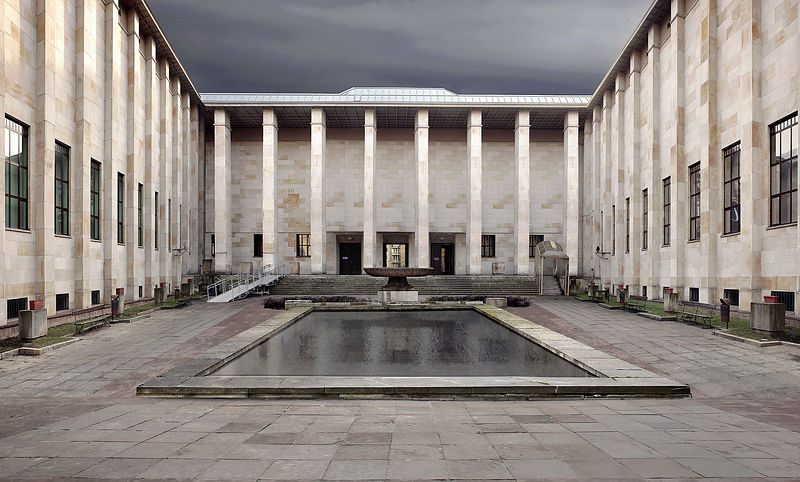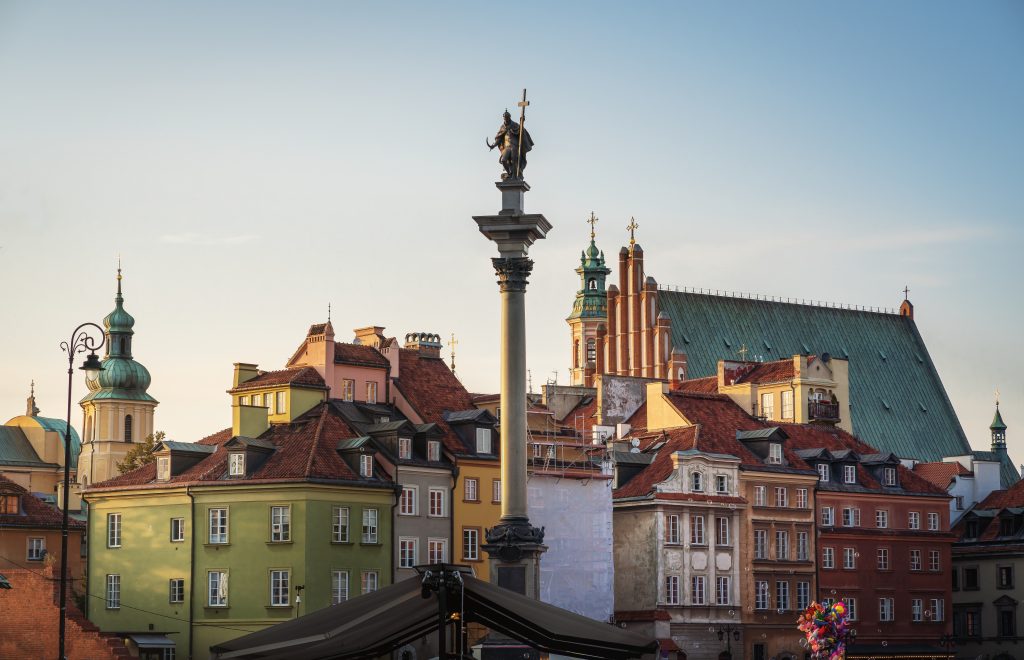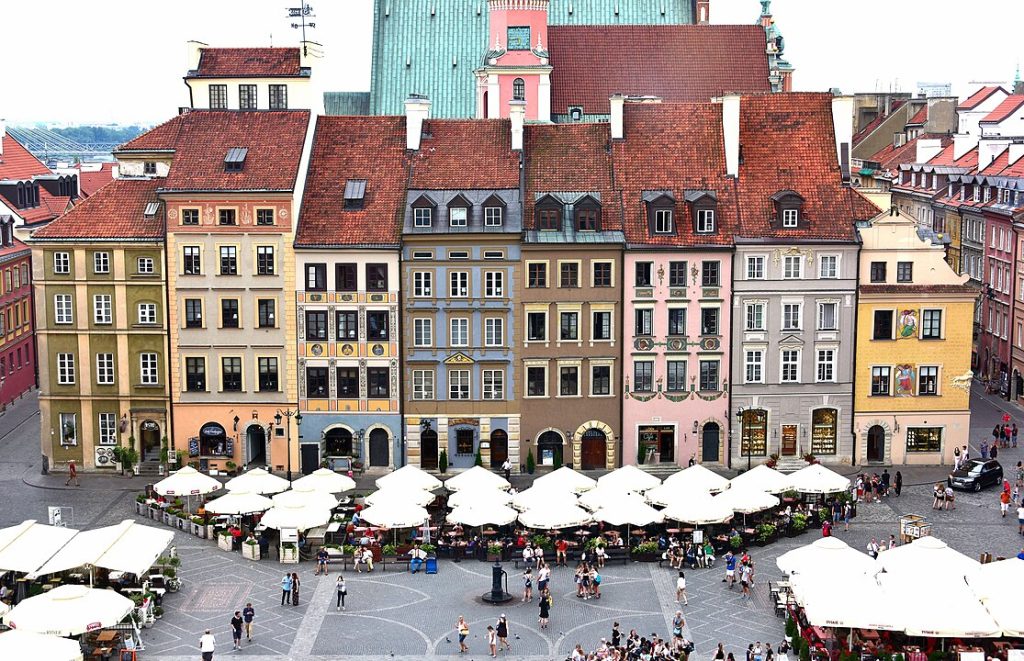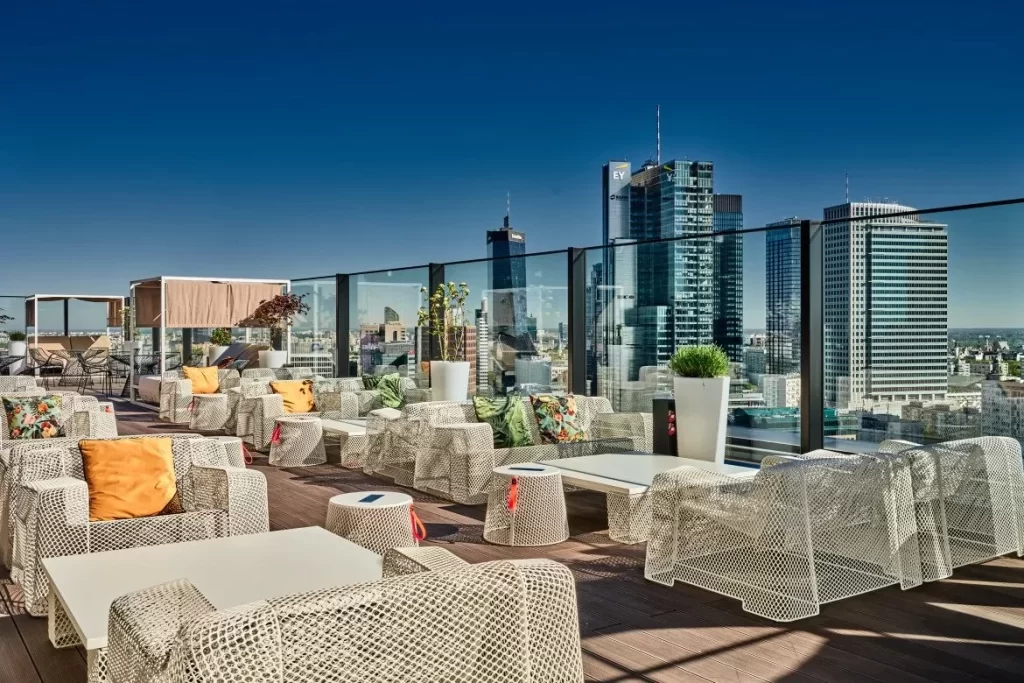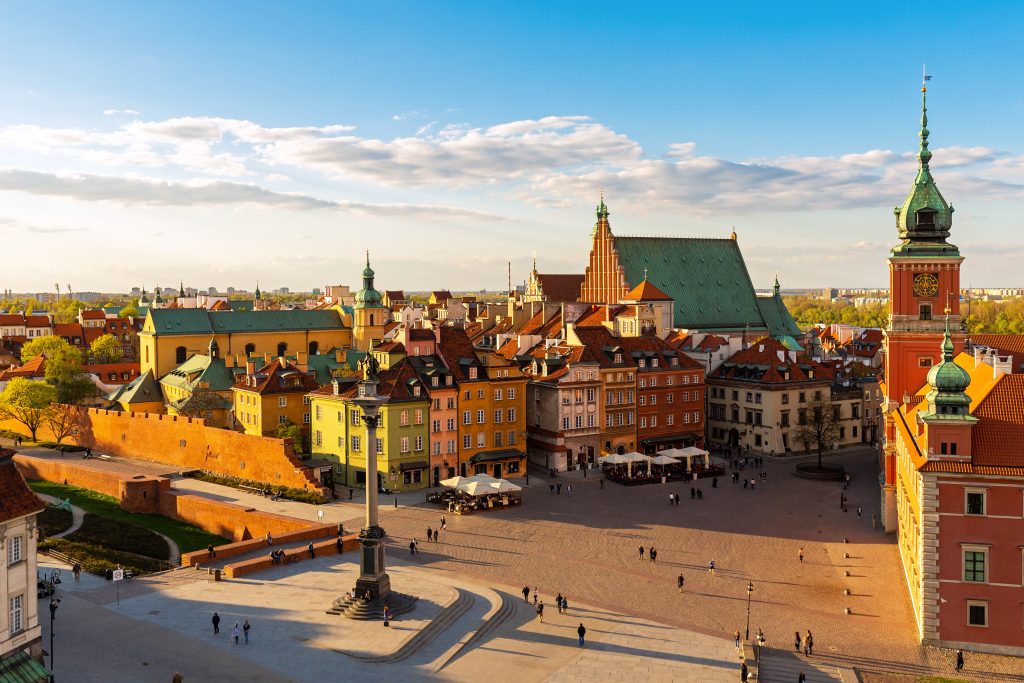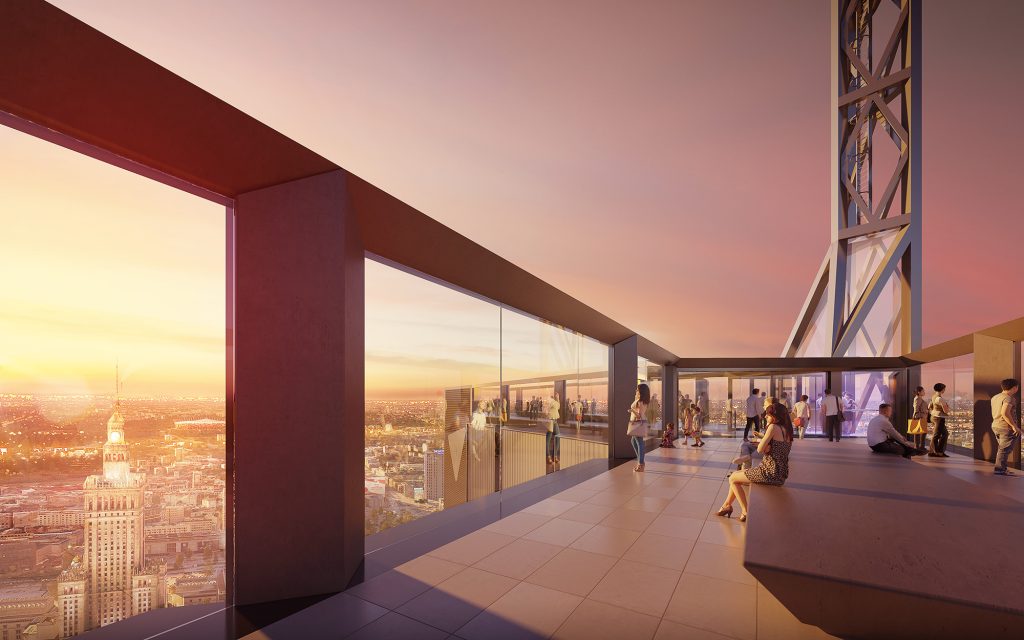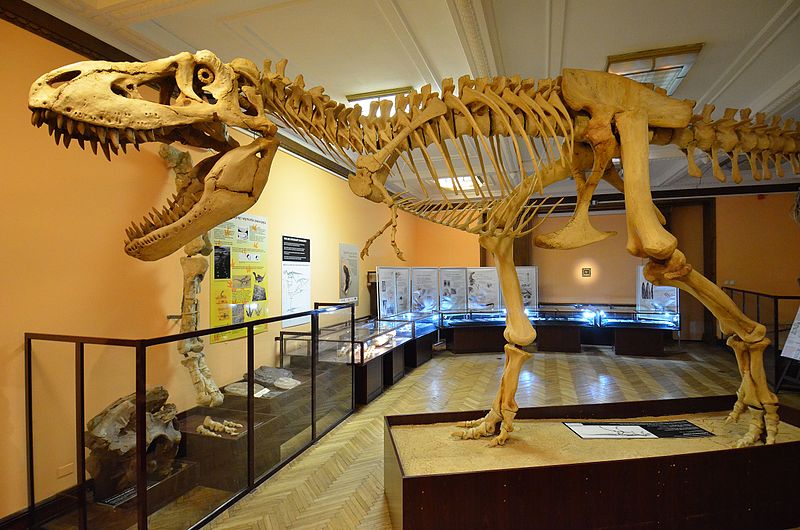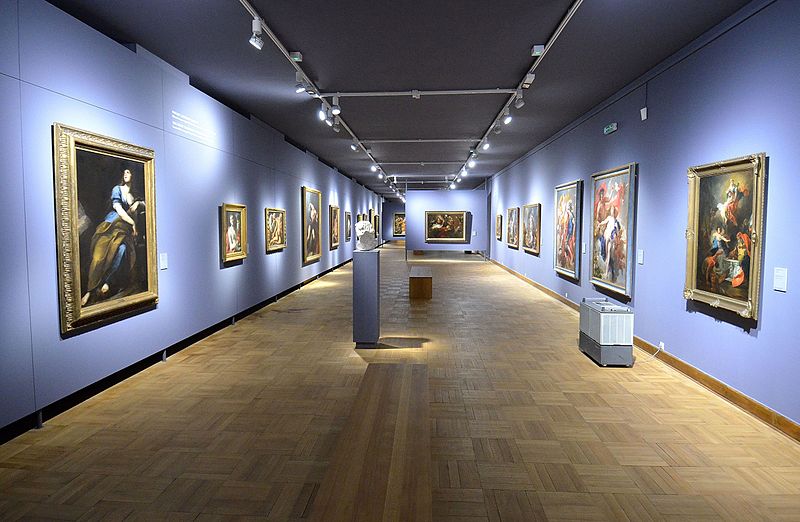- 1️⃣ Introduction - a giant in the heart of Warsaw
- 2️⃣ Stalin's gift - the genesis of the construction of PKiN
- 3️⃣ Architecture of the Palace of Culture - a style that divides
- 4️⃣ Controversy and emotion - what do Varsovians think?
- 5️⃣ Records and trivia related to PKiN
- 6️⃣ Palace today - offices, museums, events
- 7️⃣ PKiN in pop culture - movies, books, symbols
1️⃣ Introduction - a giant in the heart of Warsaw
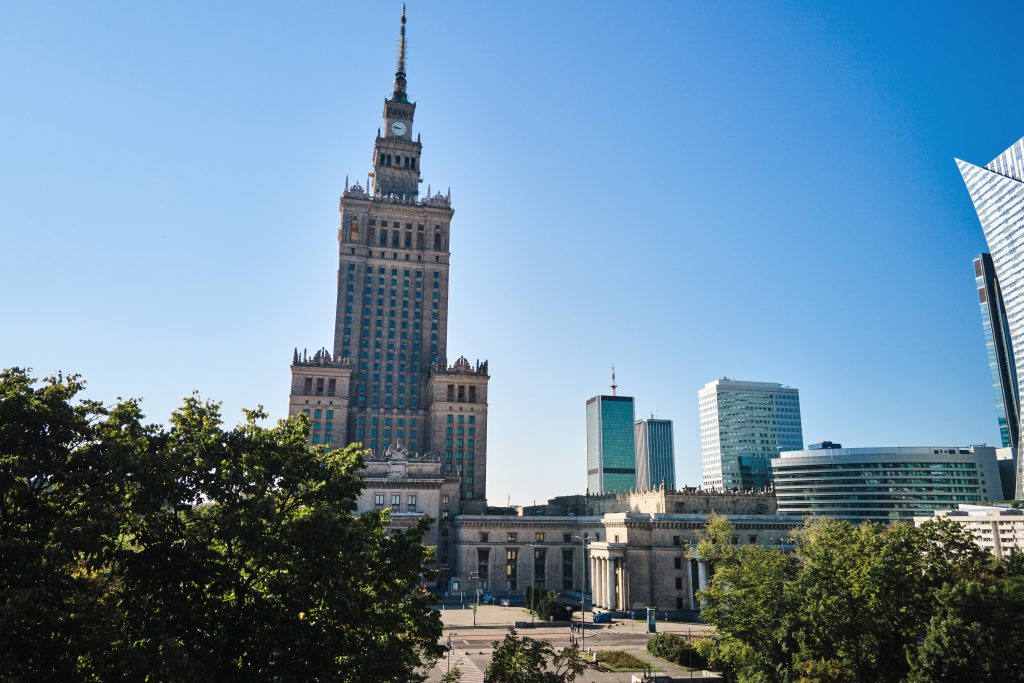
It rises above the rooftops of the capital like a guardian from a bygone era. Palace of Culture and Science is a building that some admire, others curseBut no one passes by it indifferently. It has been towering over Warsaw since 1955, serving as both a landmark and a symbol of Poland's difficult history.
Built as a gift from the Soviet Union, the Palace was intended as a gesture of friendship. In practice, it became architectural manifestation of power, a sign of Soviet domination, but also, paradoxically. part of the city's identity, which over the decades has learned to live with it and even tame it.
Today PKiN is not only icon of warsaw's landscape, but also cultural and social laboratory, which connects the past with the present. In this article we will look at its history, architecture, controversies, curiosities and the place it occupies in the consciousness of Poles.
2️⃣ Stalin's gift - the genesis of the construction of PKiN
🏰 Where to start your adventure in the capital?
👉 Castle Square - The symbolic heart of Warsaw!
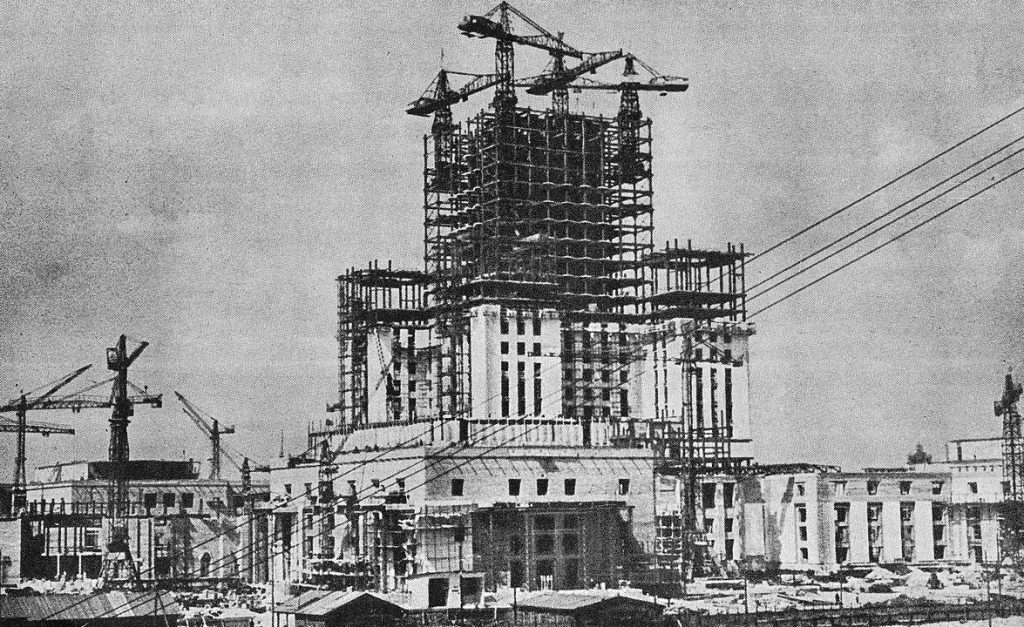
Built in the 1950s Palace of Culture and Science was supposed to be a gift from the Soviet Union to the Polish people. In reality, it became primarily a manifestation of Soviet power and a symbol of the new order imposed by the People's Republic of Poland after the war.
💠 A gift with ideological overtones
The construction of the Palace was announced by himself Joseph Stalin. Officially it was supposed to be a gesture of friendship -. free gift of the USSR For the rebuilding Warsaw. In practice, it was A showcase demonstration of Moscow's influence in the Eastern Bloc countries. The facility was supposed to be impressive in scale and a daily reminder of Poland's political dependence on the Kremlin.
💠 Soviet project, Polish land
The project was the responsibility of Lev Rudnev, a Soviet architect who visited Warsaw before starting work to familiarize himself with the local architecture. Although he tried to refer to Polish forms (such as Gothic towers), in the end the Palace clearly resembles the moscow "seven sisters" - monumental skyscrapers of the Stalinist era.
The construction involved More than 3,500 Soviet workers, who resided in specially prepared barracks - the so-called "barracks". friendship estate.
💠 Construction over the heads of Varsovians
The decision to build was made without public participation. The work moved at lightning speed, and much of the pre-war buildings in the city center were demolished. For the residents of Warsaw, it was traumatic moment - In the place of the ruined city grew not a symbol of revival, but a tool of ideology imposed from outside.
3️⃣ Architecture of the Palace of Culture - a style that divides
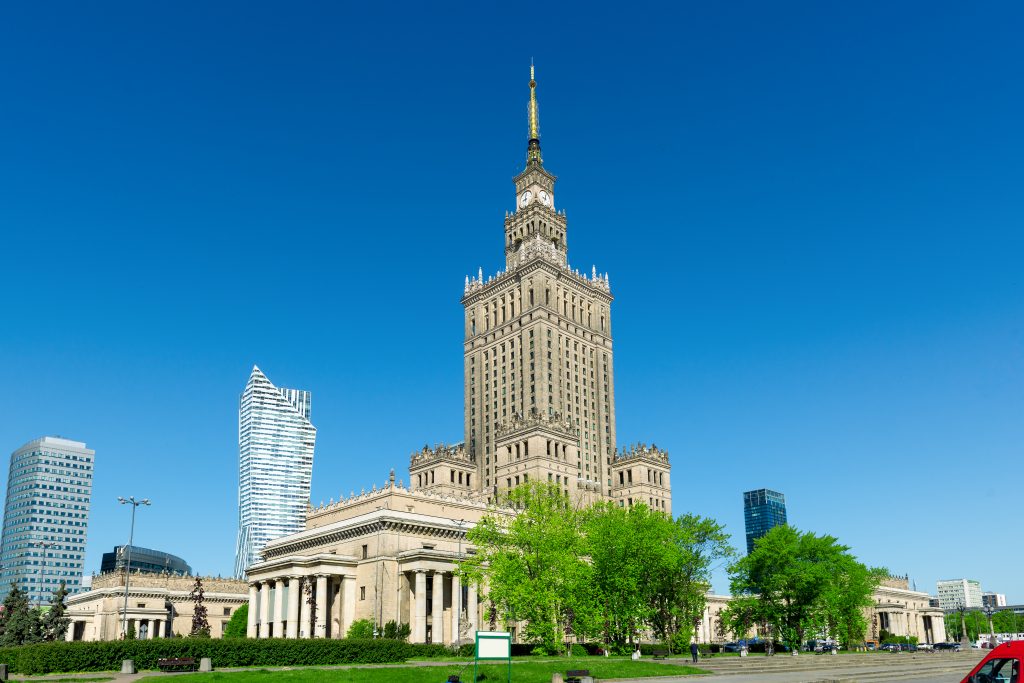
Since its construction, the Palace of Culture and Science has aroused extreme emotions. For some it is a masterpiece of Socialist Realism and a symbol of a bygone era, for others it is a heavy, alien colossus forcibly inscribed in the skyline of Warsaw. Its architecture is more than just a form - it is a political statement, encoded in stone.
💠 Social realism in a monumental version
PKiN was designed in the spirit of social realism - style, which was designed to combine "national form with socialist content." The building is massive, richly decorated, with numerous turrets, cornices and sculptures of workers, scholars and farmers. The main tower has as many as 237 meters high, and at its top is a spire visible from almost any point in the capital.
💠 Inspiration from East and West.
Although the Socialist Realist style was dominant in the USSR, Rudnev attempted to infuse the design of the elements of polish architecture, including Krakow's Gothic towers and Renaissance attics. Nevertheless, the whole definitely resembles moscow skyscrapers, which for years perpetuated the feeling of foreignness of this construction in the Polish context.
💠 Giant among the ruins
In the 1950s, the palace rose above a sea of war ruins -. huge and incongruous to low-rise Warsaw, which was still being rebuilt. It dominated the center of the city and over time became a benchmarkbut also a symbol of the imposition of the Soviet vision of public space. For many Varsovians, he was and is an "unwanted tenant" in the heart of the capital.
4️⃣ Controversy and emotion - what do Varsovians think?
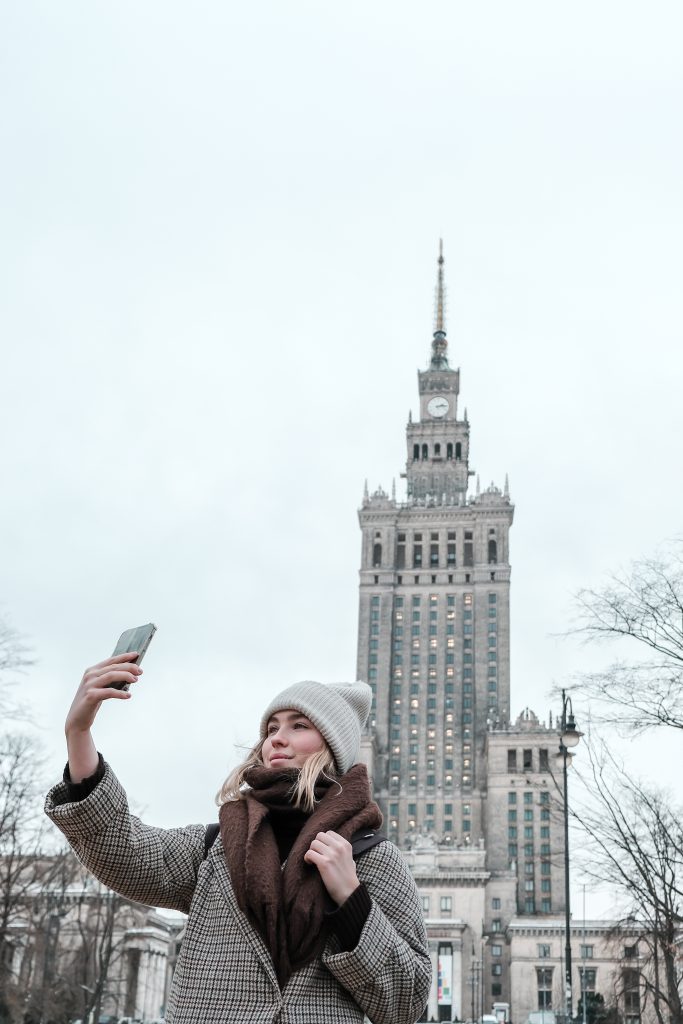
The Palace of Culture and Science has divided Warsaw residents for decades. For some, it is an icon of the city, a landmark and a place full of memories. For others - a relic of communism, whose presence in the center of the capital continues to arouse opposition. Few buildings in Poland arouse so much emotion.
💠 "Gift" or symbol of enslavement?
PKiN was seen from the beginning as a symbol of Soviet domination. Although it was officially presented as a gesture of friendship, many Varsovians saw it as a A monumental reminder of dependence on Moscow. Over time, although he changed his functions and image, he failed to completely break with this political stigma.
💠 Generations and perspectives
Older generations often remember the Palace as a backdrop to everyday life: a place of work, education, entertainment. Younger people are more likely to look at it without emotional baggage, seeing interesting architecture and a viewpoint rather than a symbol of oppression. For many tourists - it just Warsaw's most distinctive building.
💠 Demolish or preserve?
The debate has been going on for years. There are calls for the Palace to be torn down, as a the last visible sign of the communist era. Others argue that it should be left as a testimony to history and an element of the capital's identity. Just as often, there is talk of the need to transform its function to serve culture and residents even more strongly - without the ideological ballast.
5️⃣ Records and trivia related to PKiN
🌇 Want to look at Warsaw from above?
👉 Here's best viewpoints and terraces in the city
Although surrounded by controversy, the Palace of Culture and Science has over the years accumulated a number of facts around it that are impressive in scale and surprising in detail. It is not only the tallest building in communist Poland, but also the true record In many fields.
💠 Poland's tallest building for decades
From its completion in 1955 until 2022, the PKiN was a the tallest building in Poland. Measures 237 meters with spire, and the observation deck on the 30th floor leads to exactly 328 stairs (although you can also use the elevator). Today it is surpassed only by modern skyscrapers in Warsaw, such as Varso Tower.
💠 Hundreds of rooms and functions
The palace houses more than 3,000 rooms, including cinemas, theaters, museums, libraries, universities, offices and cafes. Among others, the following have their headquarters here. Drama Theatre, Museum of Technology, as well as Youth Palace. PKiN is one of the most multifunctional buildings in the country.
💠 Thousands of visitors a day
The Palace's observation deck is one of Warsaw's biggest tourist attractions. annually visited by more than 500 thousand people. From a height of 114 meters there is a panorama from which - in good weather - you can even see the Kampinos National Park.
💠 From pigeons to Hollywood
On the roof of the Palace for years nested the dozens of pigeons and falcons, and the building itself has appeared in many film productions - from Polish classics to international productions such as "The Avengers" (where his silhouette is visible on the screen).
6️⃣ Palace today - offices, museums, events

Although it was built as a symbol of political domination, today the Palace of Culture and Science functions primarily as a multifunctional center of urban life. On the one hand - it is a place of work for thousands of Varsovians, on the other - a scene of culture, education and entertainment.
💠 Headquarters of institutions and companies
Today the Palace is home to many public and private institutions. Among others, they are located here. Drama Theatre, Museum of Technology, State Museum of Evolution, as well as Youth Palace. The facility also houses universities, foundations and corporate offices, both Polish and foreign.
💠 Culture and education under one roof
The halls of the PKiN regularly host concerts, performances, film screenings and exhibitions, as well as congresses, training courses and scientific conferences. Over the years, the Palace has hosted national and international events, becoming an important point on the cultural map of Warsaw.
💠 The observation deck - a must-see on the tour
On the 30th floor is one of the most visited observation decks in Poland. An elevator takes tourists to a height of 114 meters in just a dozen seconds. The terrace offers a panoramic view of panorama of all of Warsaw, and in good weather you can see all the way to the Mazovian horizon.
💠 Night illuminations and new features
For several years, PKiN has also gained modern lighting system, which allows to display colorful illuminations on the occasion of holidays, social events and anniversaries. The palace is becoming an increasingly neutral and open symbol of the city, slowly breaking away from its ideological heritage.
7️⃣ PKiN in pop culture - movies, books, symbols
👨👩👧 Visiting with your family?
👉 Here's Top 10 attractions for kids in Warsaw - zero boredom!
Although its genesis was political, over time Palace of Culture and Science has also become popular culture icon. Its distinctive silhouette has found its way onto book covers, movies, TV series, music videos and posters. Today it is one of the most photographed buildings in Poland - not only because of its height.
💠 Movie star
PKiN has appeared in many Polish film productions. It can be seen in, among others, "Marble man" by Andrzej Wajda, ".City 44" by Jan Komasa or the comedy "The man with..." by Marek Koterski. The Palace's distinctive outline often appears in panoramas of Warsaw, as well as in documentaries and TV series, where it serves as a backdrop or symbol of the capital.
💠 Literary and graphic motif
The palace is also present in literature, from reports to novels to poetry. It appears as symbol of enslavement, but also of permanence. He found his place on posters, book covers and in comic books, often as a tongue-in-cheek icon or retro-futuristic colossus.
💠 Place of action and social commentary
In pop culture, the PKiN often serves as the background for reflection on Polish identity and difficult moments of the 20th century. Artists and creators use it to comment on reality - both past and present. It also appears in social campaigns, where it acts as a recognizable point of reference.
💠 Gadgets, memes, murals
Miniature versions of the Palace can be found in souvenir stores, and its image has found its way onto T-shirts, mugs, bags and posters. It is also a frequent hero of memes and web graphics, where it acquires new, often humorous meanings. In Warsaw, even murals with his likeness, testifying that the Palace - whether we want it or not - has become part of the city's identity.
8️⃣ Alternatives and debates - tear down, leave, rebuild?
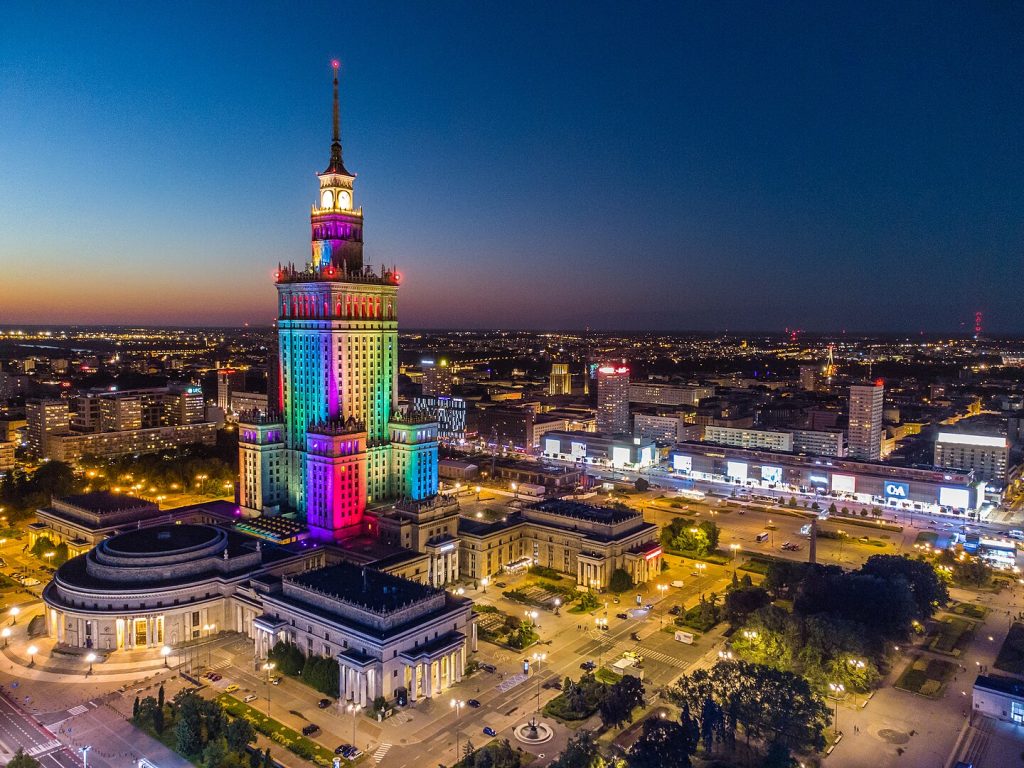
Since the 1990s, the subject of the future of the Palace of Culture and Science has regularly recurred in public debate. Some want it demolished as the last symbol of communism, others advocate its preservation - as an important part of Warsaw's identity. In the background of these disputes there are also specific ideas for redefinition of its functions.
💠 Demolition idea
Particularly after 1989, there were claims that the PKiN should be dismantle as a legacy of the totalitarian system. Critics have emphasized its symbolic links to the Soviet regime and its lack of connection to indigenous traditions. There have also been more emotional arguments - that the Palace is an "architectural trauma," imposed on public space against the will of residents.
💠 Preserve as a testimony to history
Proponents of preserving the PKiN argue that. demolishing it would be a mistake, comparable to trying to erase an inconvenient past. The palace can serve a role a living history lesson, a monument to the era and a warning. What's more - over the decades it has become an important landmark and cultural landmark, which is hard to imagine disappearing from the city's skyline.
💠 New functions, new meanings
There are increasing calls to redefine the Palace, not demolish. In practice, this means giving it new, more open and civic functions: more cultural events, modern educational spaces, recreational zones, opening to the needs of residents. Some architects are even advocating a partial reconstruction of the surroundings to integrate it better into the urban fabric.
💠 The debate continues and divides
There is no single answer to the question of what to do with the Palace. For some, it architectural monument to oppression, for others - The tame symbol of Warsaw. Regardless of the position, one thing is certain: the PKiN leaves no one indifferent.
9️⃣ Conclusion - Palace as a symbol of difficult history
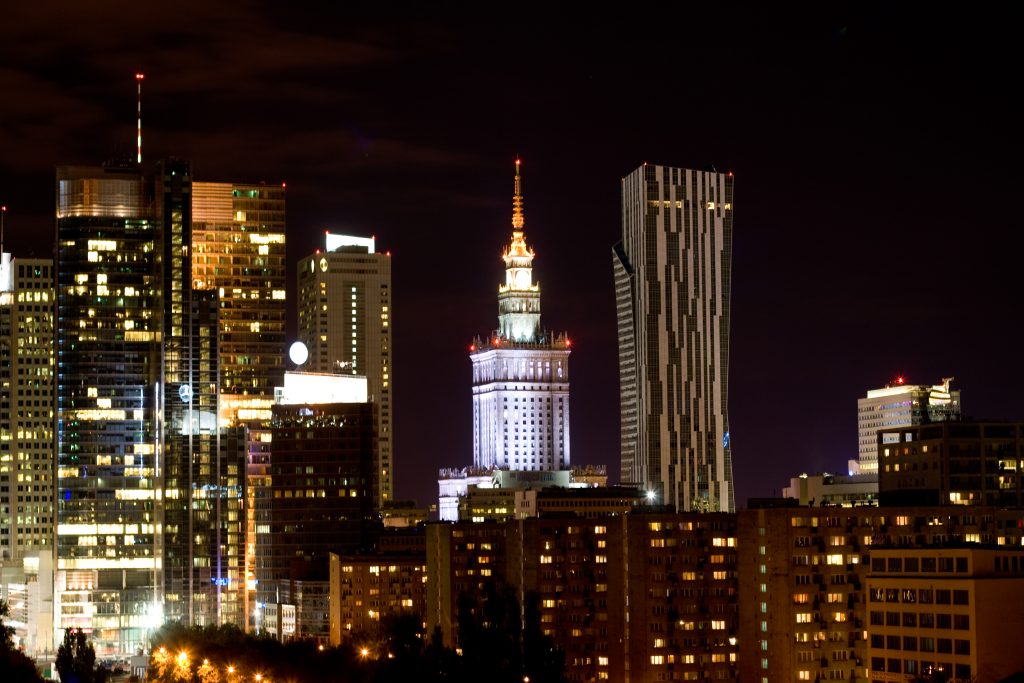
The Palace of Culture and Science is more than just the tallest building in Warsaw. It is a witness to history, a symbol of an era, a flashpoint of debate, but also a meeting place, culture and daily life. Although its pedigree dates back to the dark days of Stalin, over the years the PKiN has blended into the city's landscape and the consciousness of its residents.
For some, it remains unwanted gift, for others - architectural curiosity, with which one can come to terms and even like it. Despite attempts at ideological imposition, the Palace has changed along with Warsaw over the decades. It has become an object that can be read in many ways: as a warning, a monument, a cultural center, a place of remembrance - and, above all, as part of a complex Polish identity.
Today, the Palace of Culture is not silent - it still evokes emotions, provokes discussions and forces reflection. And perhaps that's why, regardless of assessments, it remains one of the most important buildings in the history of modern Poland.

